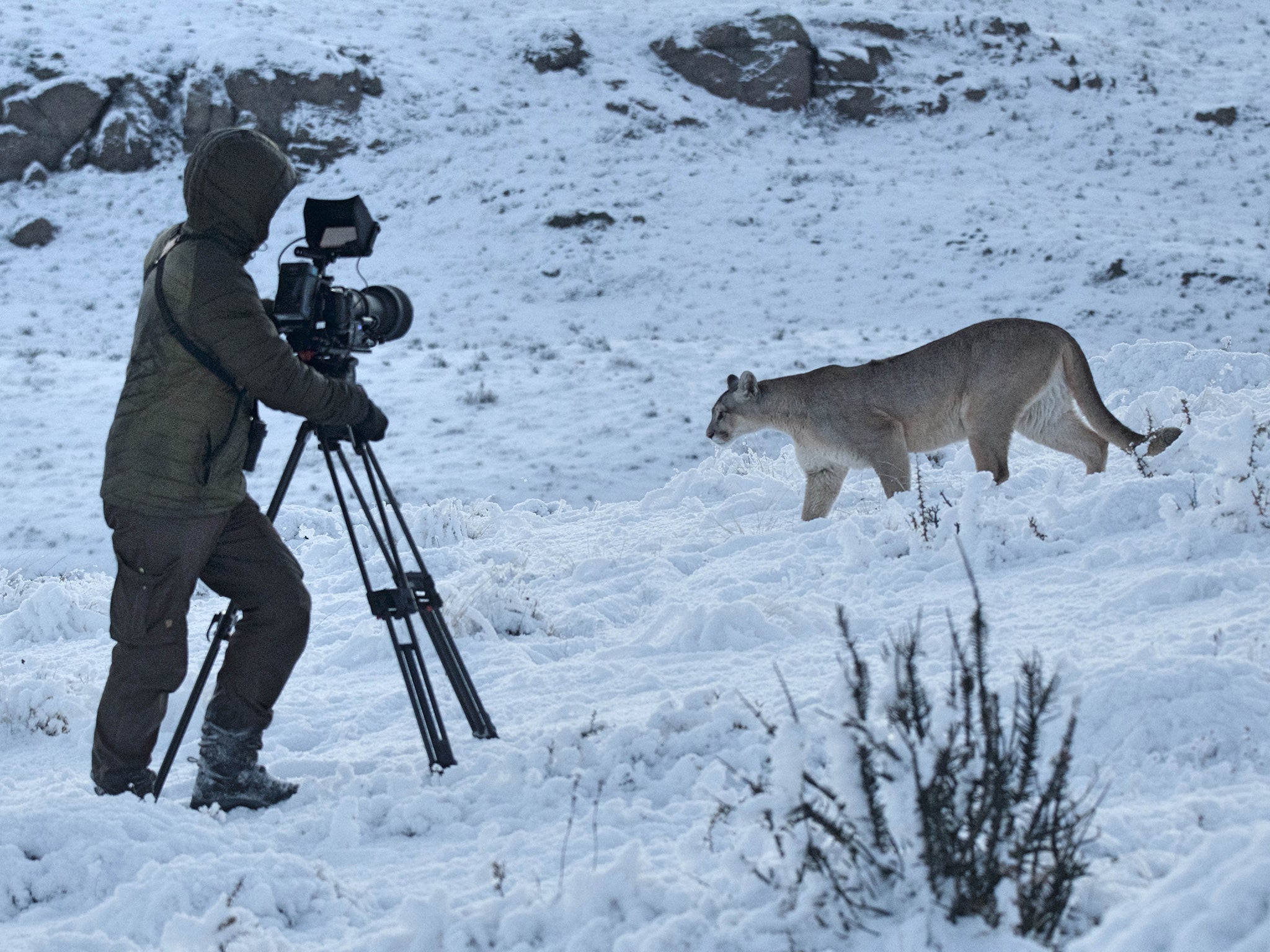Dynasties II review: Attenborough’s latest is appealing, yet guilty of dumbing down the animal kingdom
The urge to narrativise and anthropomorphise is irresistible in the BBC’s latest animal series

At 95, David Attenborough has been around for so long, and worked so prolifically, that there’s scarcely an animal or region that hasn’t fallen under the spell of his reassuringly avuncular growl. From the skies to the seas, the desert to the tundra, Attenborough has covered every blade of grass and turned every stone. So it’s natural that in his twilight years he is alighting upon subjects with slightly less grandeur or urgency than the halcyon peaks of Planet Earth and Blue Planet. Enter Dynasties II.
The premise of the Dynasties franchise, now in its second iteration, is simple. Each episode follows a different endangered species through the cycle of bringing their young into adulthood. This new series opens with an episode tracking the lives of Chile’s pumas, the big cats who prowl the desolate landscape of Patagonia. The mother cat – Rupestre – is attempting to safely navigate her four cubs through the harsh South American winter, facing off against both the elements and the intramural barbarity of their fellow pumas.
The puma – or the “ghost of the mountains”, as Dynasties II calls the species – is an interesting subject. They lack the inherent glamour of the tiger or lion (they would not, for example, make good corporate mascots for cereal or chocolate bars), looking instead like they are hewn out of granite, or the very landscape from which they emerge. And that landscape – the Torres del Paine national park – is equally stark, looking more like the Scottish Highlands than the rain and cloud forests of South America. Attention will turn, in the second episode of the series, to the well-trod tracks of the Kenyan elephant. But the greatest strength of this opener is the low-key, almost discreet, presence of the puma and the graphic loneliness of the landscape. It could be lifted from the films of Nuri Bilge Ceylan or Terrence Malick.
But for all the arthouse sensibility of the cinematography, Dynasties II also represents the feted BBC Natural History Unit at its most simplistic. The urge to narrativise and anthropomorphise the pumas is irresistible. “Under their mother’s watchful eye, each is settling in well to life as a puma,” Attenborough announces, as though being a puma were an occupation no more complex than plumbing or accountancy. This imposition of humanity onto the pumas runs all the way through to giving them names (the one-eyed enemy female is glibly called “Blinker”), something that is deeply silly the more you think about it. This rather cutesy depiction is infrequently punctuated by narration that highlights the brutal reality of “life as a puma”. “He wants to mate with Rupestre,” Attenborough reveals of an enormous male cat. “But first he will try to kill her cubs.”
At the end of all this humanoid drama, the feline instinct reasserts itself. “Rupestre has one thing left to do,” Attenborough declares, “leave her family.” She walks off into the snow, following some inscrutable biological impulse to desertion. Dynasties II, in aiming half its gaze at children, is guilty of dumbing down the great complexity of the animal brain. But for all the absent sophistication, the puma – “Patagonia’s most charismatic predator” – has the same instinctive appeal as the gravelly voice that tells its story.
Join our commenting forum
Join thought-provoking conversations, follow other Independent readers and see their replies
Comments


Bookmark popover
Removed from bookmarks